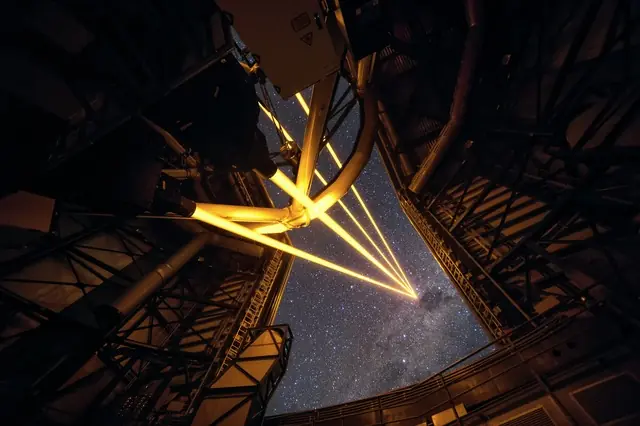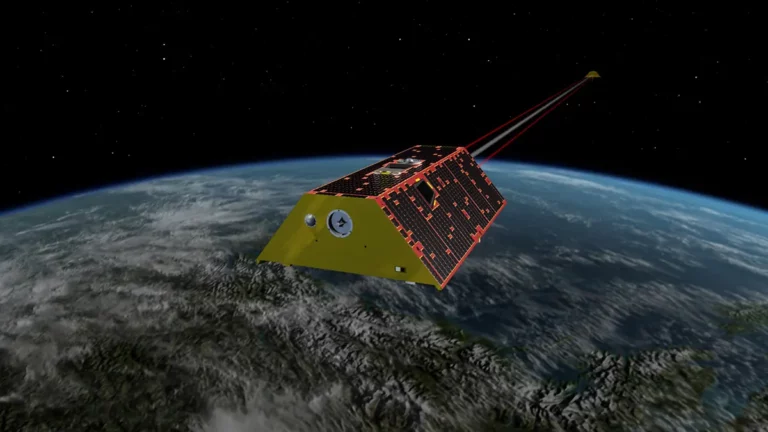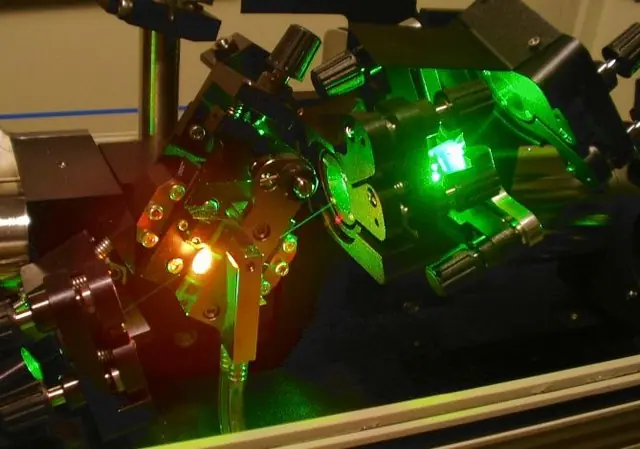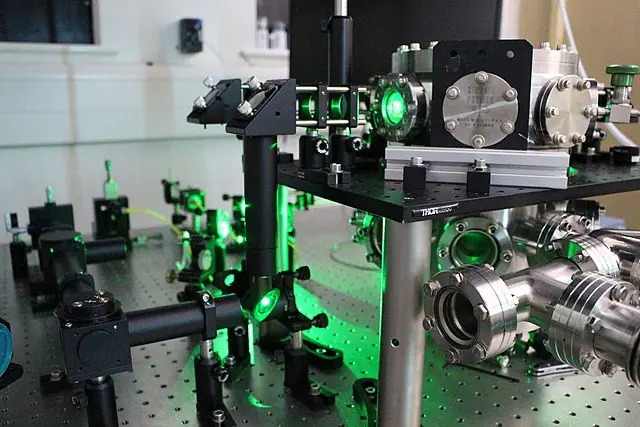Researchers at University of Maryland Break Record for Laser Guided Light with Air Waveguide Experiment
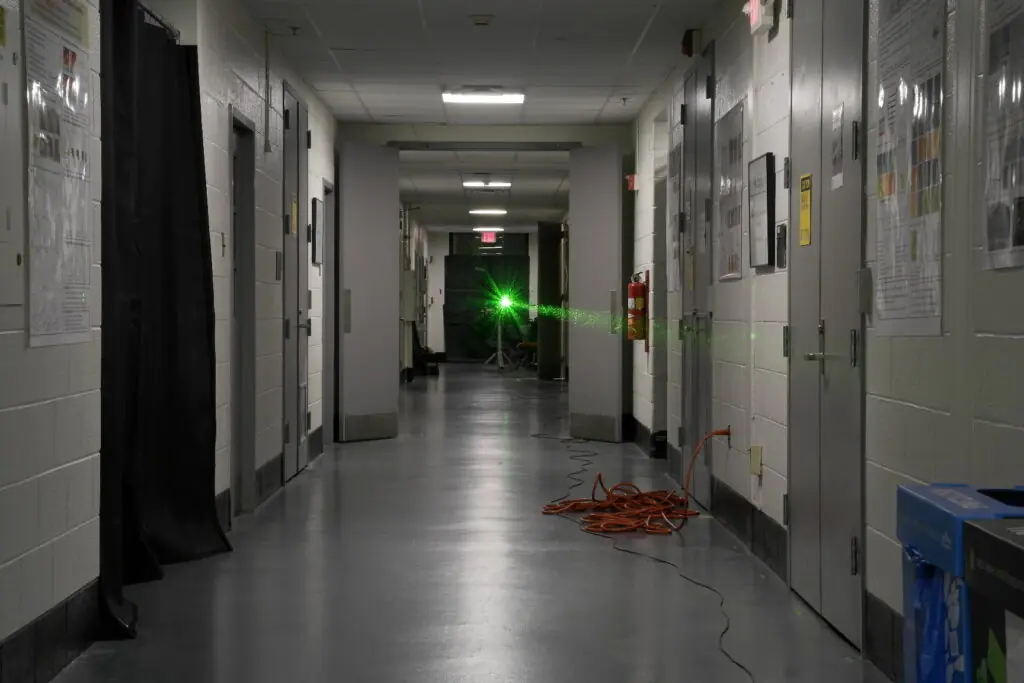
The University of Maryland’s Energy Research Facility is an unassuming building located on the northeast corner of campus. However, for a few nights in 2021, this building was transformed into a laboratory of sorts as laser pulses powerful enough to burn paper and skin were sent blazing down its hallway. The hallway was temporarily turned into a laboratory as the team of researchers worked on a project to temporarily transfigure thin air into a fiber optic cable.
The hallway was prepared for the experiment by covering shiny surfaces like doors and a water fountain to avoid potentially blinding reflections. Connecting hallways were blocked off with signs, caution tape and special laser-absorbing black curtains to ensure the safety of the researchers and students. The hallway was also filled with scientific equipment and cables.
As the researchers worked, a snapping sound indicated the path of the dangerously powerful laser. Sometimes the beam’s journey ended at a white ceramic block, which would then fill the air with loud pops and a metallic tang. A researcher would sit alone at a computer in the adjacent lab with a walkie-talkie and perform requested adjustments to the laser.
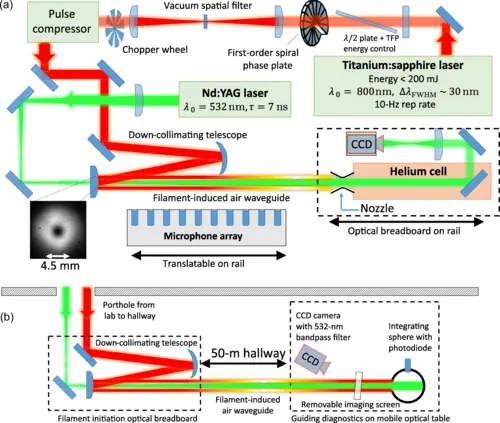
The goal of the experiment was to set a record by guiding light in 45-meter-long air waveguides and to understand the physics behind the method. The team achieved this by using ultra-short laser pulses to sculpt waveguides in the air. The short pulse technique utilizes the ability of a laser to provide such a high intensity along a path, called a filament, that it creates a plasma. This energetic path heats the air and leaves a path of low-density air in the laser’s wake. The team wanted a high-density core similar to fiber optic cables, so they created an arrangement of multiple low-density tunnels that naturally merged into a moat surrounding a denser core of unperturbed air.
The researchers used a novel laser setup that automatically scaled up the number of filaments depending on the laser energy. The filaments naturally distributed themselves around a ring and the researchers showed that this technique could extend the length of the air waveguide, increasing the power they could deliver to a target at the end of the hallway.
The researchers conducted the experiment at night to avoid inconveniencing colleagues or students during the day. They also had to get their safety procedures approved before they could proceed with the experiment. The project was a unique experience for all the researchers involved and the team was able to overcome the challenges posed by the huge scale-up to 45 meters by reconsidering the fundamental physics of air waveguide generation and ensuring safety by cooperating with both the physics department and the Maryland environmental safety office.

The successful experiment demonstrated the potential of air waveguides in areas such as detecting light emitted by atmospheric pollution, long-range laser communication, and even laser weaponry. The team’s work was published in the journal Physical Review X and showed that the waveguide was able to keep about 20% of the light that otherwise would have been lost.
The experiment conducted by the University of Maryland’s Energy Research Facility demonstrates the potential for air waveguides to play a significant role in the future of light transmission and collection. The team’s innovative approach and successful demonstration of their method shows the potential for future advancements in this field.

